Welcome to the ultimate guide for crafting the most delicious and moist Carrot Cake you’ll ever taste! This recipe transforms simple ingredients into a truly unforgettable dessert, brimming with the natural sweetness of freshly grated carrots and a perfect blend of warming spices. Crowned with a luxurious, tangy-sweet cream cheese frosting, this cake isn’t just a treat; it’s an experience. Forget dry, dense carrot cakes of the past – prepare for a tender, flavorful masterpiece that will earn you rave reviews every time.
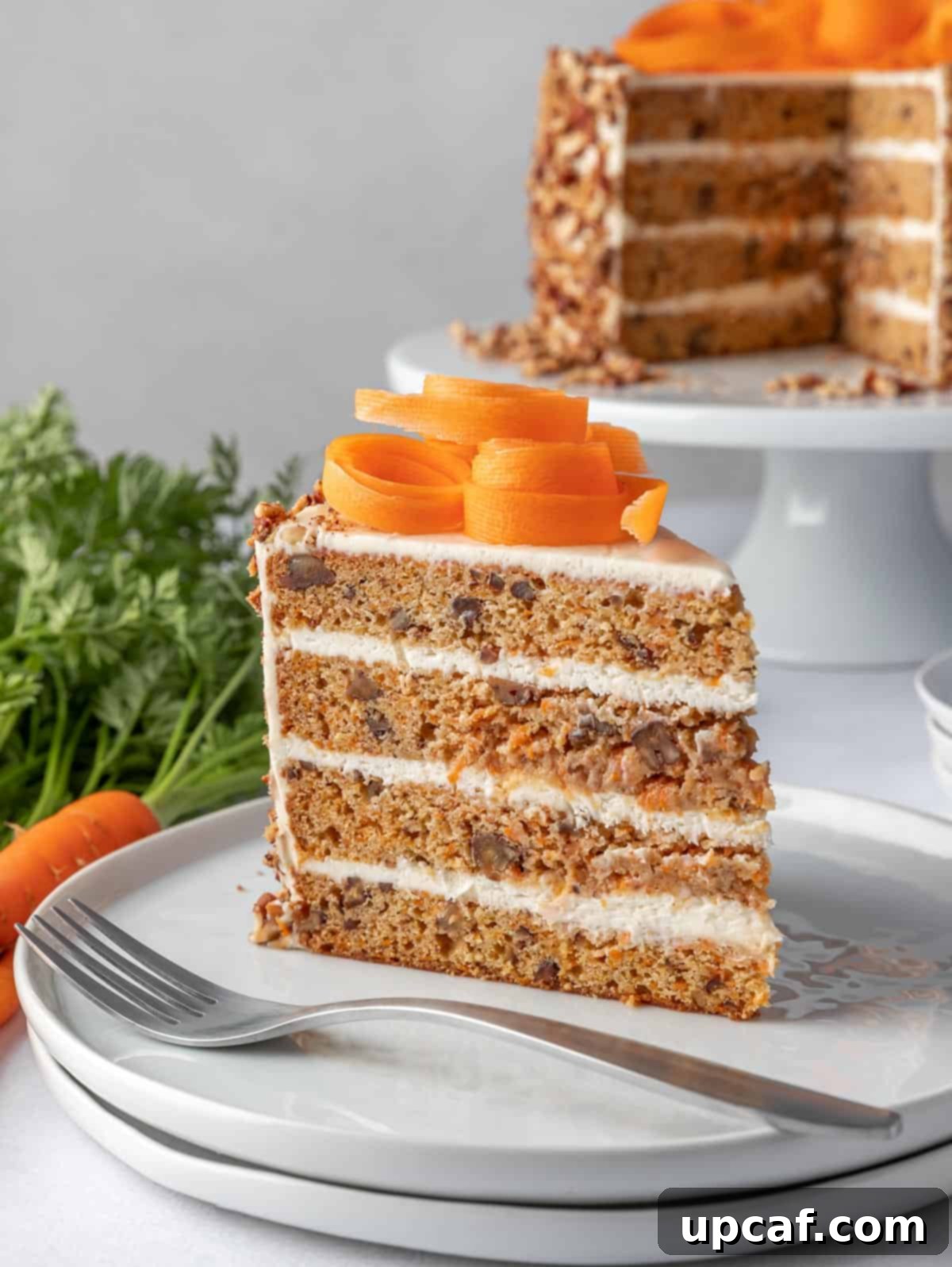
This easy carrot cake recipe is designed to be foolproof, allowing even novice bakers to achieve spectacular results. Its remarkable moistness comes from a thoughtful combination of ingredients, ensuring each bite is tender and never overly sweet. While often associated with spring celebrations like Easter, this versatile dessert is perfect for any occasion, from casual family gatherings to elegant holiday feasts. You won’t need an arsenal of specialty equipment; a simple mixer will suffice for the batter, and with a bit of elbow grease, you can even whip it up by hand. Prepare to elevate your baking skills and delight everyone with this exceptional homemade carrot cake.
Looking for more festive and comforting desserts, especially during the fall and winter months? Be sure to explore some of my other seasonal favorites. Indulge in the rich flavors of my Pecan Pie Cheesecake, a delightful fusion of two classic desserts. For a unique twist, try the luscious Pumpkin Cake Roll, or satisfy your craving with the convenient and equally delicious Pumpkin Pie Cheesecake Bars. These recipes are particularly perfect for Thanksgiving and Christmas, showcasing the best of seasonal produce like pumpkin.
Why This Classic Carrot Cake Will Become Your Go-To Recipe
There are countless reasons why this particular carrot cake recipe stands out, making it a beloved staple in any baker’s repertoire. It consistently delivers on flavor, texture, and visual appeal, ensuring a memorable dessert experience every time.
- Unbelievably Soft and Moist Crumb: The hallmark of a truly great carrot cake is its texture. This recipe guarantees a tender, melt-in-your-mouth crumb that is exceptionally moist. It’s engineered to stay soft for days, a testament to its perfect balance of wet and dry ingredients, ensuring that every slice is as delightful as the first.
- The Ultimate Cream Cheese Frosting: A carrot cake is only as good as its frosting, and ours is nothing short of perfection. This decadent cream cheese frosting is light, fluffy, and boasts the ideal balance of tang and sweetness. It complements the spiced carrot cake beautifully, creating a harmonious flavor profile that is utterly irresistible without being cloying.
- Visually Stunning Layered Presentation: While sheet pan cakes have their place, a beautifully layered carrot cake truly impresses. This recipe guides you to create elegant, uniform cake layers, generously filled with luscious cream cheese frosting. The contrast between the rich, spiced cake and the pristine white frosting makes for a show-stopping dessert that’s perfect for celebrations and special occasions.
- Effortlessly Delicious: Despite its impressive appearance and gourmet taste, this carrot cake is surprisingly easy to make. The straightforward instructions and common ingredients mean you don’t need to be a seasoned baker to achieve bakery-quality results. It’s a rewarding baking project that yields incredible dividends.
- Perfectly Balanced Flavors: The spices – nutmeg, cinnamon, and a hint of orange zest – are carefully measured to enhance, not overpower, the natural sweetness of the carrots. This creates a warm, inviting aroma and a complex flavor profile that appeals to a wide range of palates.
Essential Ingredients for Your Perfect Carrot Cake
Crafting the best carrot cake begins with selecting the right ingredients. Each component plays a vital role in achieving that signature moist texture and rich, spiced flavor. Here’s a detailed look at what you’ll need and why each item is important:

- All-Purpose Flour: This is your base. Unlike cake flour, all-purpose flour provides enough structure to hold up the grated carrots and other moist ingredients without making the cake too delicate. Make sure to measure it correctly by spooning it into your measuring cup and leveling it off, rather than packing it in, to avoid a dense cake.
- Baking Powder and Baking Soda: These are your leavening agents, crucial for the cake’s rise and tender crumb. Always check their expiration dates; expired leaveners will result in a flat cake. Baking soda reacts with acidic ingredients (like brown sugar and applesauce), while baking powder provides an extra lift.
- Salt: Just a pinch of salt helps to balance and enhance all the other flavors, preventing the cake from tasting bland or overly sweet.
- Ground Nutmeg and Ground Cinnamon: These warming spices are indispensable for the classic carrot cake flavor. They provide a comforting, aromatic depth that perfectly complements the carrots. Use fresh spices for the best aroma and taste.
- Dried Orange Peel (or Fresh Zest): This secret ingredient adds a bright, citrusy note that elevates the entire cake. You can find dried orange peel in the spice aisle, or use fresh orange zest for an even more vibrant flavor if dried is unavailable. Ensure it’s finely grated to distribute evenly.
- Eggs: Large eggs bind the ingredients together and contribute to the cake’s structure and moisture. It’s essential to bring them to room temperature before mixing, as this helps them emulsify better with other ingredients, creating a smoother batter and a more consistent cake texture.
- Brown Sugar: This is key for moisture and a rich, caramel-like flavor. You can use either light or dark brown sugar; dark brown sugar will give the cake a slightly deeper color and more pronounced molasses flavor. Its moist texture helps keep the cake from drying out.
- Coconut Oil: Using non-flavored coconut oil adds moisture without imparting a strong coconut taste. It’s a great alternative to other oils, contributing to a wonderfully tender crumb. Ensure it’s melted but not hot when added to the batter.
- Unsweetened Applesauce: This is a brilliant addition for moisture and can also slightly reduce the need for excessive oil, making the cake feel a touch lighter. Opt for plain, unsweetened applesauce to avoid altering the flavor or making the cake too sweet.
- Vanilla Extract: Use a high-quality pure vanilla extract for the best flavor. It enhances all the other sweet and spiced notes in the cake.
- Freshly Grated Carrots: The star of the show! You’ll need about 2-3 large carrots, yielding approximately 2 cups when tightly packed. It’s crucial to grate your own carrots rather than using pre-shredded ones, as fresh carrots release more moisture and flavor, resulting in a significantly moister cake. A box grater or food processor with a grating attachment works perfectly for this.
- Chopped Pecans: These add a delightful crunch and nutty flavor that pairs wonderfully with carrot cake. Toasting them lightly on a skillet or in the oven beforehand will bring out their full aroma and taste, adding an extra layer of complexity to the cake.
Ingredients for the Irresistible Cream Cheese Frosting
No carrot cake is complete without a rich, tangy, and fluffy cream cheese frosting. This recipe ensures a frosting that is perfectly balanced and easy to spread.
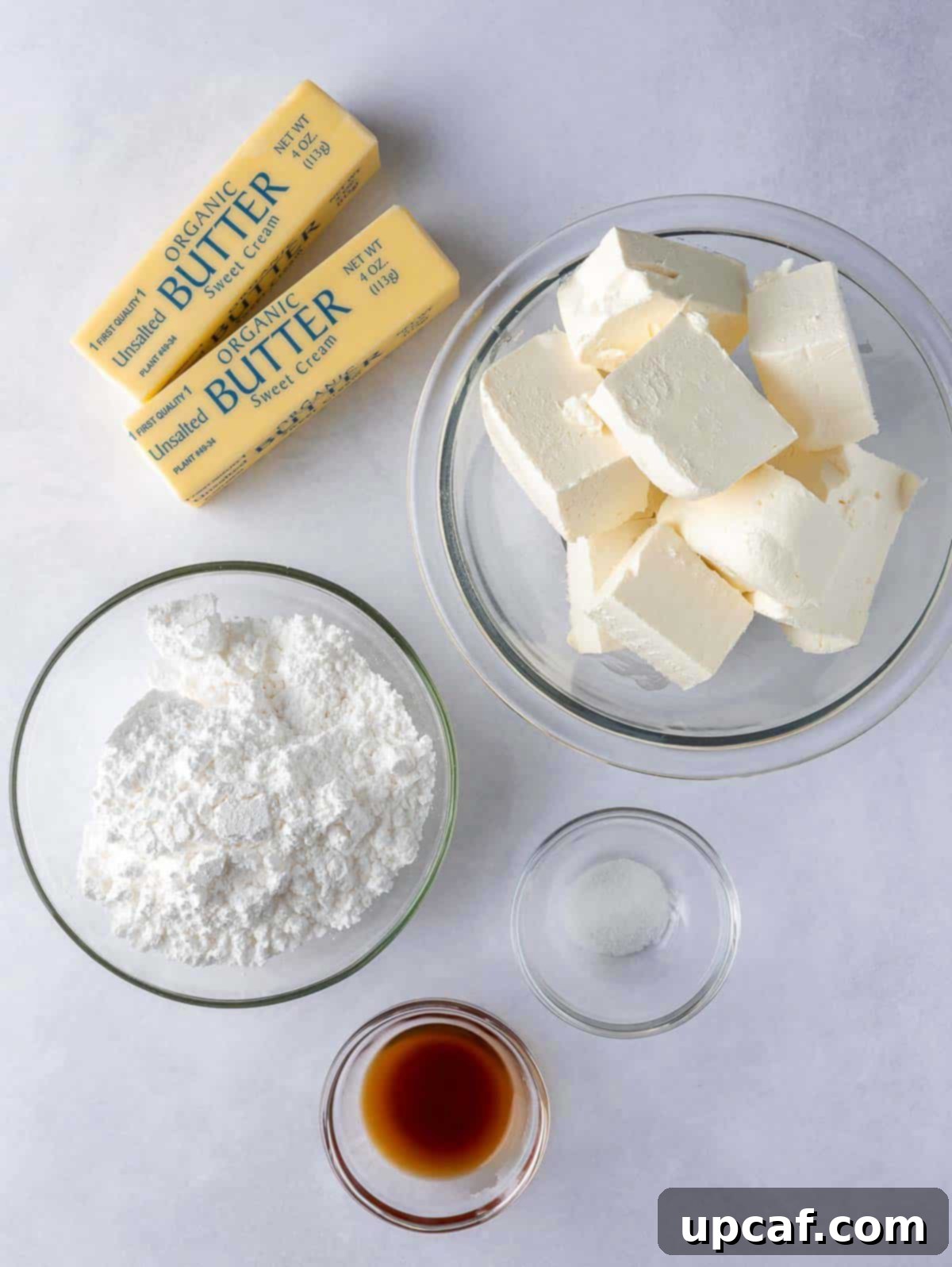
- Cream Cheese: For the best results, use full-fat cream cheese that comes in a brick form, like Philadelphia brand. Spreadable or low-fat versions contain too much water, which can make your frosting runny and unstable. Ensure it’s softened to room temperature for a smooth, lump-free consistency.
- Unsalted Butter: Also softened to room temperature, unsalted butter is vital for a rich flavor and creamy texture. Using unsalted butter allows you to control the total salt content in your frosting.
- Powdered Sugar (Confectioners’ Sugar): This fine sugar provides sweetness and helps to thicken the frosting. Always sift it after measuring to prevent lumps and ensure a super smooth, fluffy frosting.
- Vanilla Extract: As with the cake, a good quality pure vanilla extract is essential here to enhance the cream cheese and butter flavors, adding a warm, inviting aroma.
- Salt: A tiny pinch of salt (optional, but highly recommended) helps to cut through the sweetness and highlight the tanginess of the cream cheese, making the frosting more balanced and addictive.
How To Make Homemade Carrot Cake With Cream Cheese Icing
Creating this magnificent carrot cake is a rewarding process. Follow these step-by-step instructions to bake a moist, flavorful cake and top it with a luscious cream cheese frosting.
Part 1: Preparing the Carrot Cake Layers
- Preheat and Prepare Pans: Begin by preheating your oven to 350°F (175°C). Generously grease the bottoms and sides of two 8-inch round cake pans with baking grease or a non-stick baking spray. You can also line the bottoms with parchment paper for easier removal.
- Combine Dry Ingredients: In a large mixing bowl, whisk together the all-purpose flour, baking powder, baking soda, salt, ground nutmeg, ground cinnamon, and dried orange peel. Whisk thoroughly for about 30 seconds to ensure the leavening agents and spices are evenly distributed. Set this dry mixture aside.
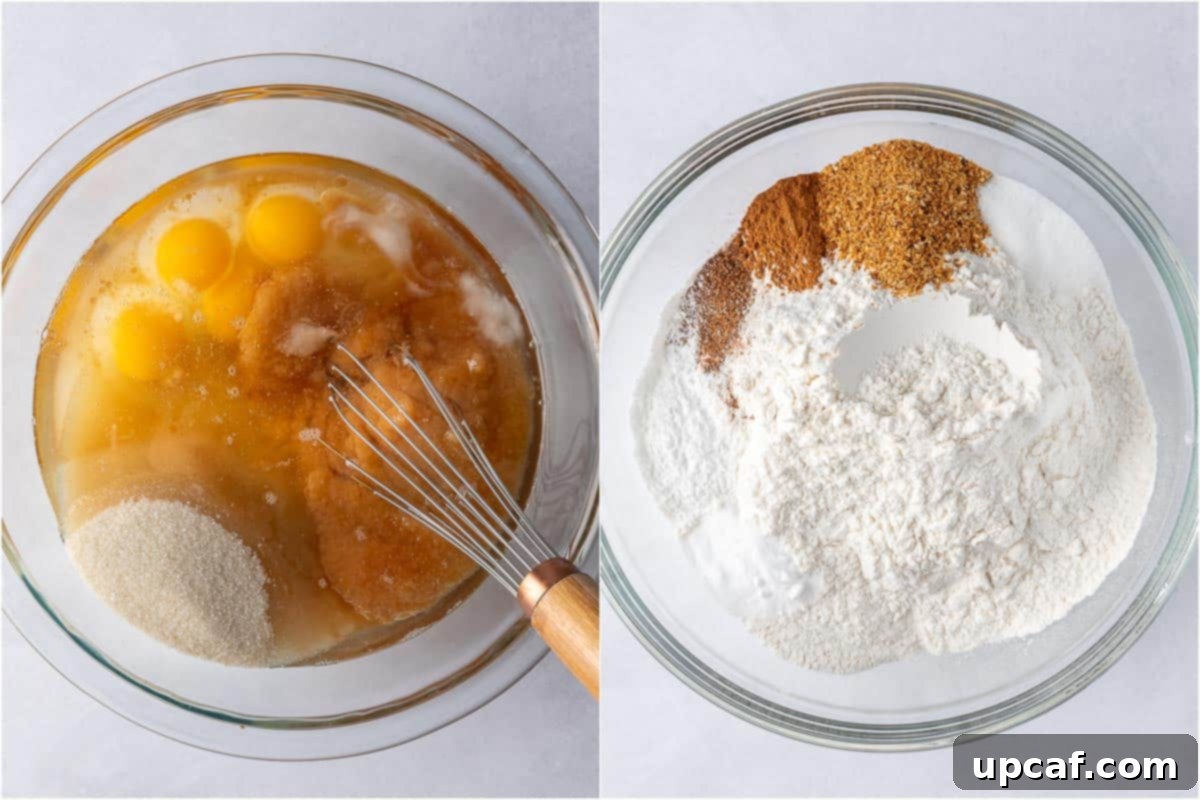
- Mix Wet Ingredients: In a separate, medium-sized bowl, whisk together the room temperature eggs and brown sugar until well combined and slightly lighter in color. Then, add the unsweetened applesauce, melted (but not hot) coconut oil, and vanilla extract. Whisk again until smooth and fully incorporated.
- Form the Batter: Gradually add the dry ingredient mixture to the wet ingredient mixture. Using a spatula, gently fold until just combined. Be careful not to overmix, as this can develop the gluten in the flour and lead to a tough cake. Once mostly combined, fold in the freshly grated carrots and 1 cup of the chopped, toasted pecans until evenly distributed throughout the batter.
- Divide and Smooth: Divide the prepared batter evenly between the two greased cake pans. Use the back of a spoon or an offset spatula to gently flatten out the tops of the batter, ensuring even baking.
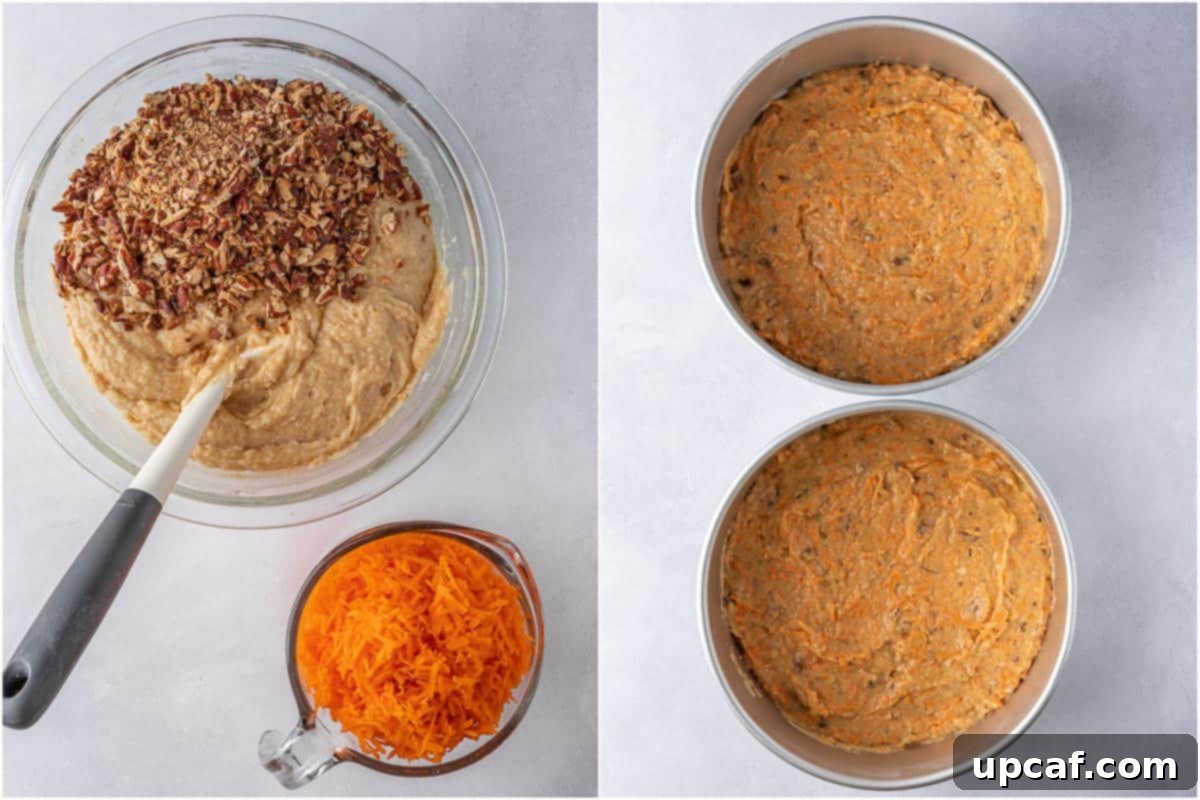
- Bake the Cake Layers: Place the pans on the middle rack of your preheated oven. Bake for approximately 25-35 minutes, or until a wooden toothpick inserted into the center of the cakes comes out clean with no wet batter attached.
- Cool and Slice: Once baked, remove the cakes from the oven and let them cool in their pans on a wire rack for about 20 minutes. This allows them to firm up slightly. After 20 minutes, gently run a thin spatula or knife along the sides of the pan to loosen the cake. Invert the cake layers onto the cooling rack to cool completely. Once fully cooled, use a serrated knife (like a bread knife) to carefully slice each baked cake horizontally into two even layers, yielding a total of four cake layers. If any domes formed during baking, gently level them off before slicing to ensure flat layers.

Part 2: Making the Cream Cheese Frosting
- Whip the Butter: In the bowl of a stand mixer fitted with the whisk attachment, place the softened unsalted butter and a pinch of salt (if using). Whip on high speed for 3-5 minutes until the butter is pale in color, significantly increased in volume, and very fluffy. This aeration is key to a light frosting. Transfer this whipped butter to another bowl and set aside.

- Combine Cream Cheese and Sugar: In the same mixing bowl (no need to wash it), place the softened cream cheese. Whisk on high speed until it’s soft and smooth, with no lumps. Gradually add the sifted powdered sugar, starting on low speed to avoid a cloud of sugar, then increasing to high. Whisk until fully incorporated and smooth.
- Finish the Frosting: Add the reserved whipped butter back into the bowl with the cream cheese mixture. Whisk on medium-high speed until both are thoroughly combined and the frosting is light and fluffy. Mix in the vanilla extract. If desired, you can add a tiny squeeze of lemon juice here for an extra tang, whisking to incorporate. Divide the finished frosting into four equal portions for easy assembly.
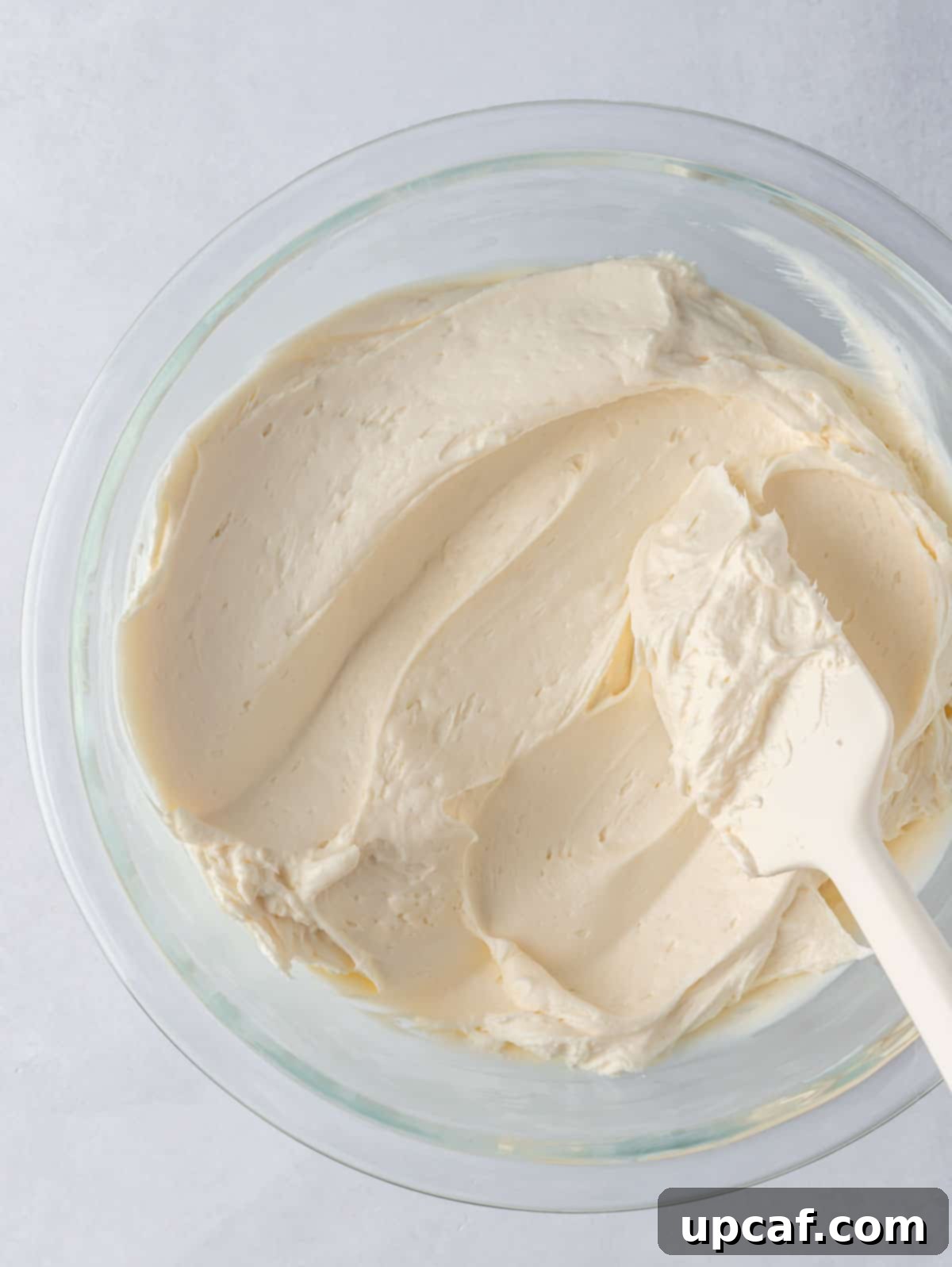
Part 3: Assembling and Decorating Your Carrot Cake
- First Layer and Crumb Coat: Place one cake layer onto your desired serving plate, cake stand, or cake board. Spread one-quarter of the frosting evenly over this layer. Repeat with the second and third cake layers, spreading one-quarter of the frosting on each. Gently place the fourth and final cake layer on top. Apply a thin “crumb coat” of frosting all over the cake, sealing in any loose crumbs. This helps achieve a clean, smooth finish for your final frosting layer. Chill the cake in the refrigerator for 10-15 minutes to allow the crumb coat to set.
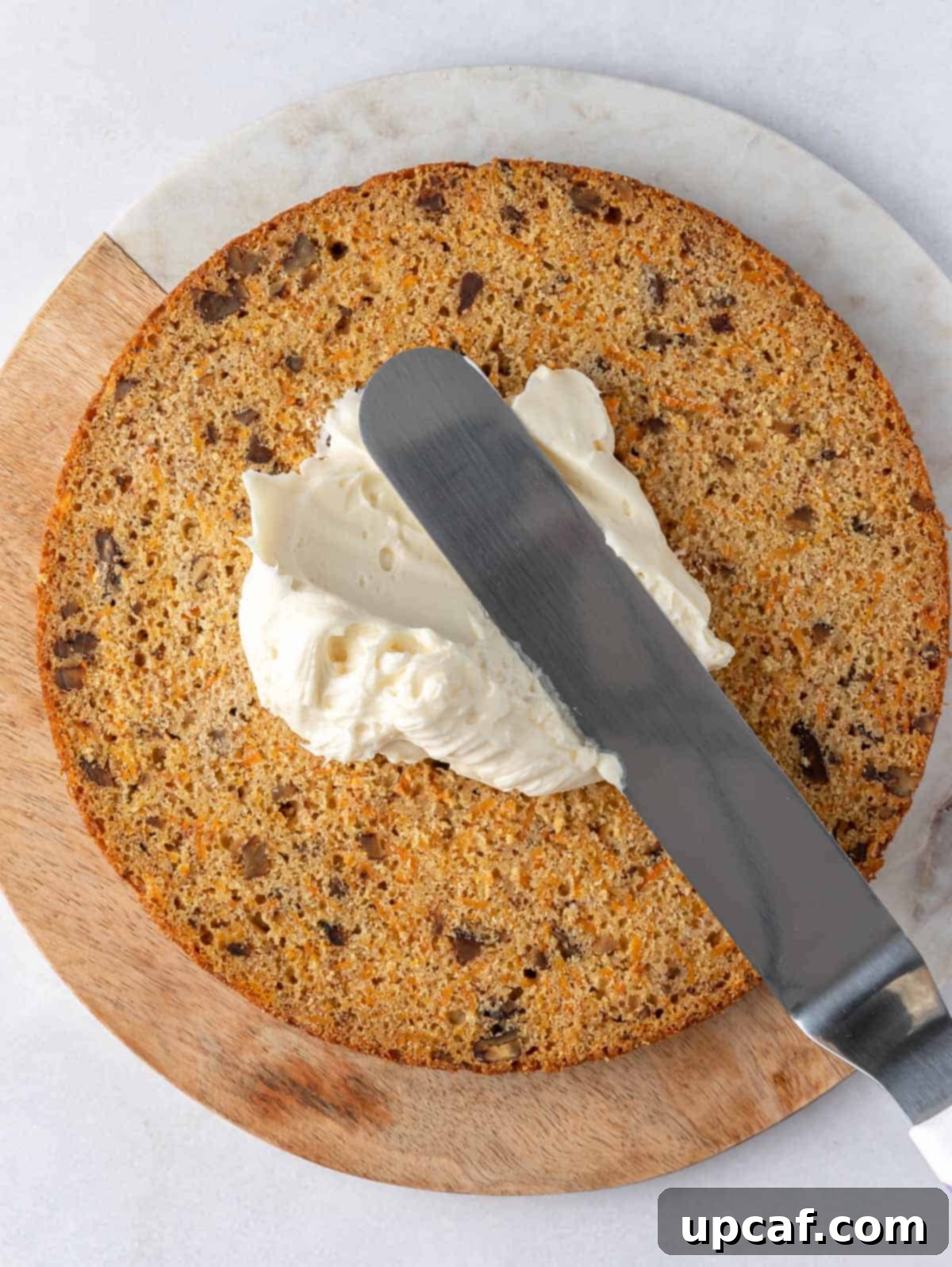
- Final Frosting and Decoration: Once the crumb coat has chilled, apply the remaining frosting to the top and sides of the cake. Use an offset spatula to create a smooth, even finish, or swirl it artistically. Gently press the remaining chopped pecans onto the sides of the cake, or sprinkle them over the top.
- Chill and Garnish: Allow the assembled and frosted cake to set in the refrigerator for at least 3-4 hours. This chilling time is crucial for the frosting to firm up and for the flavors to meld beautifully. Before serving, you can decorate the top of the cake with delicate carrot shavings, additional pecans, or small chocolate carrot decorations for an extra charming touch.
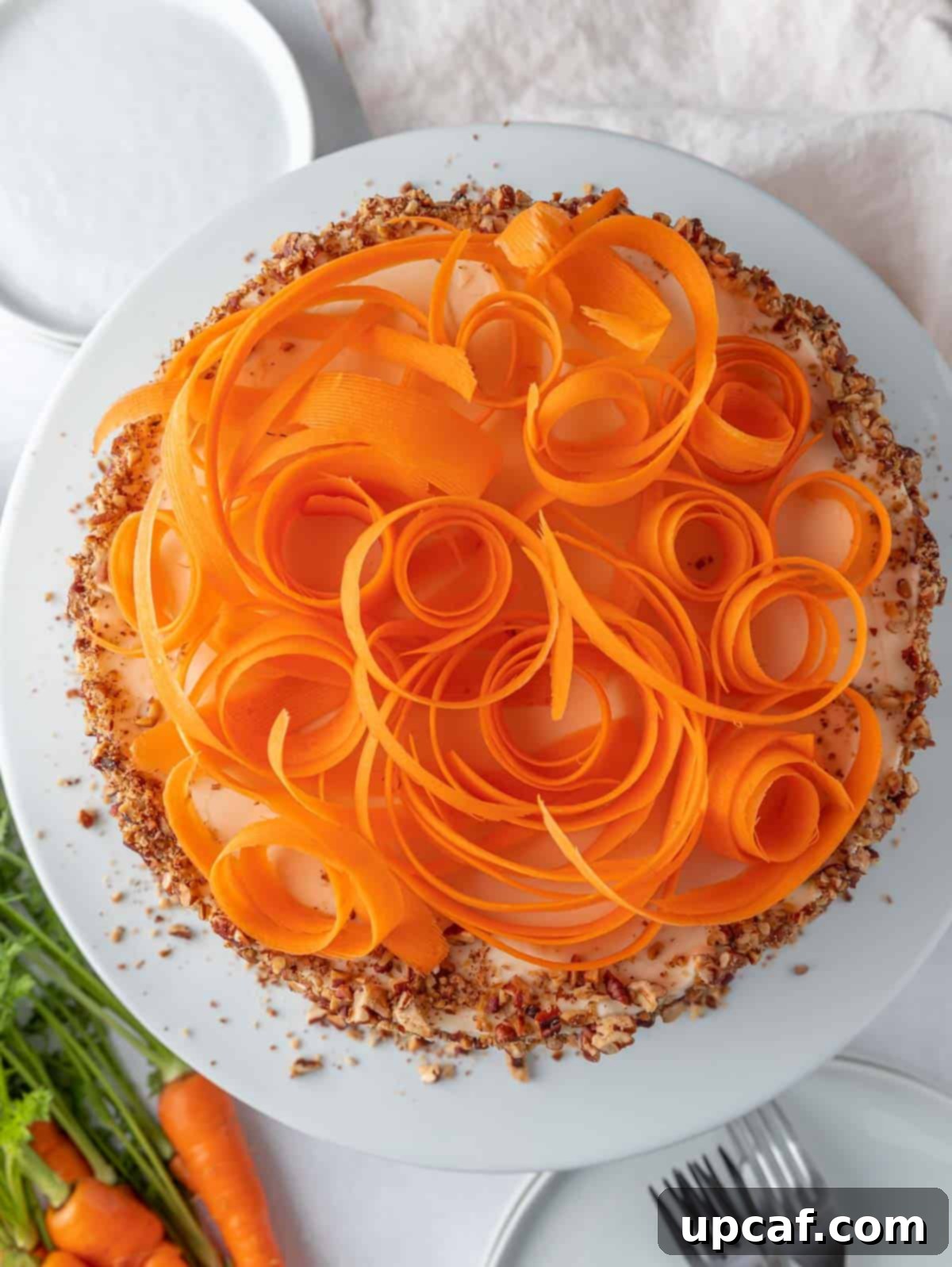
Expert Tips for the Best Moist Carrot Cake
Achieving a truly outstanding carrot cake involves a few key techniques. Incorporating these expert tips will ensure your cake is perfectly moist, flavorful, and beautifully presented.
- Tap Out Air Bubbles: After pouring the batter into the cake pans, gently tap the pans on your kitchen counter a few times. This helps to release any trapped air bubbles, resulting in a more even texture and preventing large air pockets in your baked cake.
- Measure Flour Accurately: Avoid packing flour into your measuring cup. Instead, fluff the flour with a fork or spoon it lightly into the cup, then level it off with a straight edge. Too much flour is a common cause of dry, dense cakes.
- Check Doneness with a Toothpick: To confirm your cake is fully baked, insert a wooden toothpick into the center of the cake. If it comes out clean or with just a few moist crumbs, the cake is done. If it still has wet batter, continue baking for a few more minutes and re-test.
- Avoid Over-mixing the Batter: Once you’ve added the dry ingredients to the wet, mix only until just combined. Over-mixing develops the gluten in the flour, leading to a tough, chewy cake rather than a tender one.
- Use a Serrated Knife for Layers: The easiest and most effective way to slice your cooled cake into even layers is by using a long serrated knife, such as a bread knife. A steady hand and a gentle sawing motion will yield clean, flat layers.
- An Offset Spatula is Your Friend: For smooth and effortless frosting application, an offset spatula is indispensable. Its angled blade allows you to spread frosting evenly across the top and sides of the cake with ease.
- Bring Ingredients to Room Temperature: Ensure all cold ingredients (eggs, butter, cream cheese) are at room temperature before you begin mixing. This allows them to emulsify and combine much more smoothly, creating a uniform batter and frosting texture without over-mixing.
- Achieve Flat Cake Layers with Cake Strips: For perfectly flat cake layers that don’t dome in the center, consider using cake strips. These moist, insulated bands wrap around your cake pans and help the cakes bake more evenly.
- Don’t Overfill Smaller Pans: If you opt to use smaller cake pans to create more layers (e.g., three 6-inch pans instead of two 8-inch), be mindful not to overfill them. Adjust baking times accordingly and ensure there’s enough room for the cake to rise without spilling over.
- Toast Your Nuts: Toasting pecans (or any nuts you choose to add) before incorporating them into the batter or using them as garnish significantly enhances their flavor and aroma, adding depth to the cake.
- The Power of Fresh Carrots: While pre-shredded carrots are convenient, they are often drier and thicker, which can impact the moisture and texture of your cake. Taking the time to grate fresh carrots yourself makes a noticeable difference in the final product.
Frequently Asked Questions About Carrot Cake
Here are answers to some common questions about making, storing, and customizing your homemade carrot cake:
Due to its cream cheese frosting, carrot cake must be stored in the refrigerator. To prevent the frosting from absorbing odors or drying out, keep the cake tightly covered with plastic wrap or in an airtight cake carrier. Properly stored, it will remain fresh and delicious for about 5 days.
You can easily prepare components of this carrot cake in advance. The baked cake layers can be wrapped tightly in plastic wrap and stored in the refrigerator for 2 to 3 days, or frozen for up to a month. The cream cheese frosting can also be made 1 to 2 days ahead of time and stored in an airtight container in the fridge. Bring the frosting to room temperature and re-whip it slightly before assembling the cake.
For the best flavor and moisture, I recommend using large, fresh orange carrots. They tend to have more flesh and sweetness compared to smaller varieties. Most importantly, always grate your own carrots just before baking. Pre-grated carrots found in stores are often drier and coarser, leading to a less tender and moist cake over time.
Yes, carrot cake freezes beautifully! You can freeze individual slices or a whole cake, with or without frosting. For unfrosted cake layers, wrap them tightly in plastic wrap and then foil. For frosted cake, freeze uncovered until the frosting is firm, then wrap tightly. It can be frozen for 2 to 3 months. Thaw overnight in the refrigerator, then bring to room temperature before serving or frosting.
Absolutely! Carrot cake is wonderfully adaptable. Many recipes include additions like golden raisins, shredded coconut, or crushed pineapple (drained well to avoid excess moisture). You can add about ½ to 1 cup of any of these to the batter along with the carrots and pecans for extra texture and flavor. Adjust your spices if desired to complement these additions.
If your cream cheese frosting is too runny, it might be due to overly soft cream cheese/butter or too little powdered sugar. Try chilling it in the fridge for 20-30 minutes, then re-whipping. If still too thin, gradually add more sifted powdered sugar, 1 tablespoon at a time, until it reaches the desired consistency. If it’s too stiff, add a tiny bit of milk or cream (½ teaspoon at a time) and whip until smooth and spreadable.
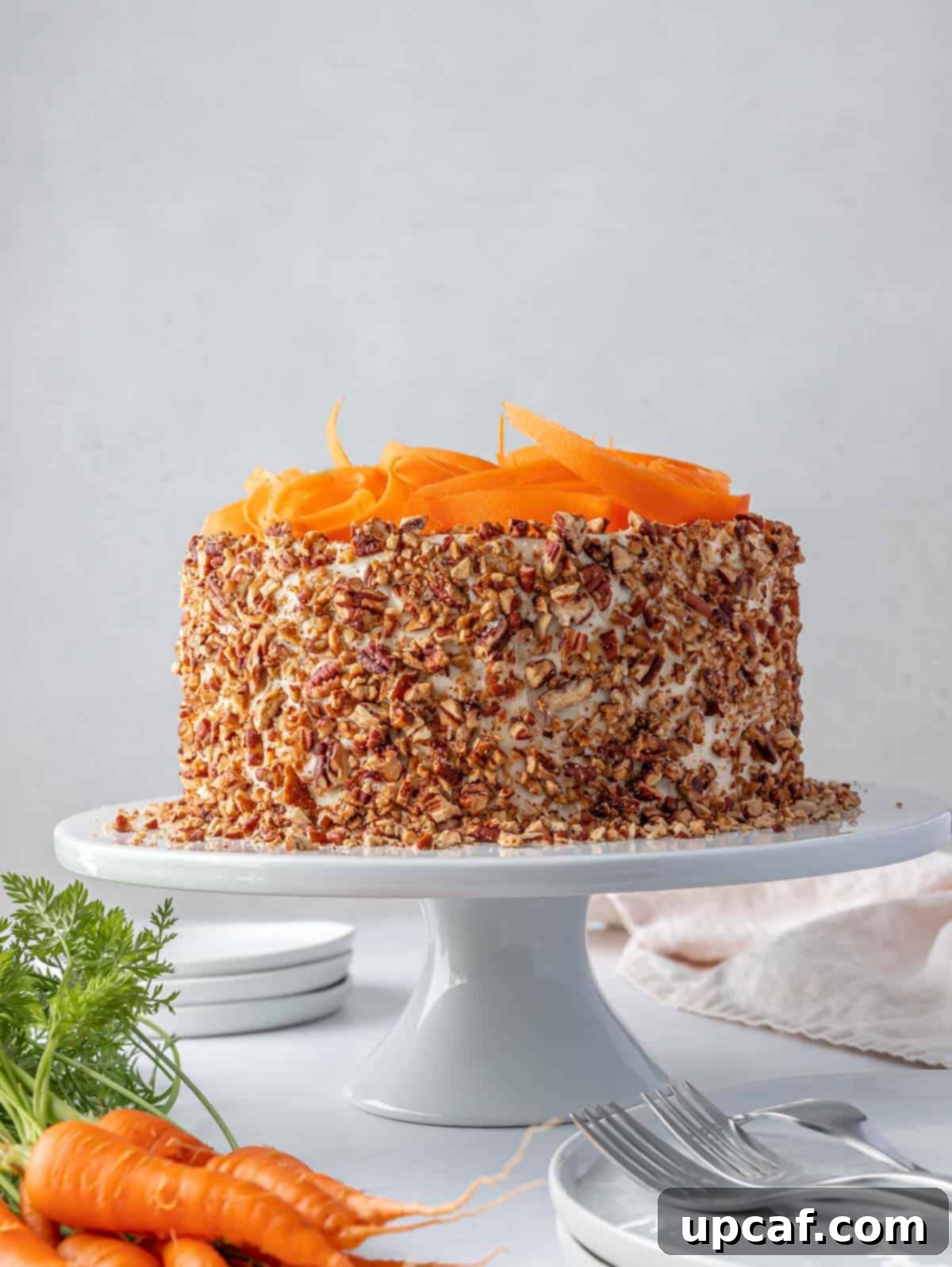
More Delicious Dessert Recipes to Try
If you’ve enjoyed mastering this carrot cake, you’ll love exploring other delightful recipes designed to impress and satisfy your sweet tooth. From classic cheesecakes to comforting cakes, there’s always something new to bake.
- Chocolate Chip Cheesecake: A creamy, dreamy cheesecake studded with delightful chocolate chips.
- Double Chocolate Cheesecake: For the ultimate chocolate lover, this rich cheesecake is a true indulgence.
- Best New York Style Cheesecake: A timeless classic, offering a dense, smooth, and utterly delicious experience.
- Raspberry Cheesecake Bars: Convenient and bursting with fresh raspberry flavor, perfect for sharing.
- Banana Walnut Cake: A comforting and moist cake, perfect for any time of day.
I genuinely hope you find as much joy in making and sharing this homemade Carrot Cake recipe as I do. It’s a true labor of love that promises to bring smiles to every face. Don’t hesitate to try it out, savor every bite, and share your delightful creations!
If this recipe brings you baking success and enjoyment, please consider leaving a star rating and a comment below to share your experience. I’d love to see your delicious recreations – use my hashtag to share them with me on INSTAGRAM! For all my latest social posts, kitchen tips, and new recipes, be sure to follow Cookin’ With Mima on FACEBOOK, INSTAGRAM, and PINTEREST. Happy baking!
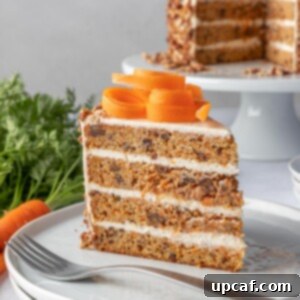
Best Moist Carrot Cake
Ingredients
For the Carrot Cake Layers
- 2 ½ cups all-purpose flour
- 2 tsp baking powder
- 1 tsp baking soda
- ½ tsp salt
- ½ tsp ground nutmeg
- 2 tsp ground cinnamon
- 1 Tbsp dried orange peel, or fresh if dry is not available.
- 4 large eggs
- 1 ½ cup light or dark brown sugar, or use organic cane sugar
- 1 cup melted coconut oil, not hot
- 1 cup unsweetened apple sauce
- 1 tsp vanilla extract
- 2 cups tightly packed freshly grated carrots, about 2-3 large carrots
- 2 cups chopped pecans, toasted (1 cup for the cake batter, 1 cup to garnish)
For the Cream Cheese Frosting
- 16 oz cream cheese
- 1 cup room temperature unsalted butter, 2 sticks
- 1 cup powdered sugar, scooped and then sifted
- 2 tsp vanilla extract
- Pinch of salt, optional
Instructions
The Cake
- Preheat the oven to 350F (175°C).
- Grease the bottom of two 8” pans with baking grease or spray with baking spray.
- In a large bowl whisk together all-purpose flour, baking powder, baking soda, salt, ground nutmeg, ground cinnamon, dried orange peel. Set aside.
- In a separate bowl mix together eggs and sugar. Add applesauce, oil, vanilla.
- Add dry mixture to liquid mixture and mix with the spatula to incorporate. Add carrots and 1 cup of pecans and mix to incorporate.
- Divide the batter evenly between the two pans.
- Flatten out the tops of the batter.
- Bake in the middle oven rack for about 25-35 minutes until a toothpick inserted comes out clean.
- Let the cake layers cool in the pan for 20 minutes. Gently run a spatula along the sides of the pan to loosen up the cake. Transfer the cake layer onto a cooling rack to cool completely.
- Discard any dome, if present, to create flat layers.
- Slice horizontally each baked cake into two even layers, resulting in 4 even cake layers in total.
The Cream Cheese Frosting
- In a bowl of a stand mixer, place room temperature butter and salt. Whisk on high until pale/white in color and enlarged in volume. Transfer the whipped butter into another bowl and set aside.
- Into the same mixing bowl (no need to wash it), place softened cream cheese and whisk on high until soft and smooth. Add powdered sugar and whisk again until incorporated. Add the reserved whipped butter, vanilla, and lemon juice (if using), and whisk until fully incorporated and fluffy.
- Start frosting the cooled cake right away.
Assembly
- You can assemble the cake within a cake ring for stability or directly onto your chosen cake platter/board.
- Divide the frosting into 4 equal parts.
- Place one cake layer onto a serving dish or cake stand. Spread ¼ of the frosting evenly with a spatula.
- Place the second cake layer and spread another ¼ of the frosting.
- Place the third cake layer and spread another ¼ of the frosting.
- Top with the 4th final cake layer and place the cake in the fridge for about 10-20 minutes to set.
- Apply a thin “crumb coat” of the remaining frosting to the outside of the cake to seal in any loose crumbs. Chill for 10 minutes, then apply the final layer of frosting to the entire cake.
- Sprinkle the sides with the remaining pecans and let the cake set for about 3-4 hours in the fridge.
- Before serving, decorate the top of the cake with carrot shavings or cover with pecans for an elegant finish.
Notes
- Tap the cake pans on the kitchen counter to release air bubbles and ensure an even bake.
- Avoid packing flour when measuring; spoon it into the cup and level it for accurate results and a tender cake.
- Insert a toothpick into the cake’s center to check for doneness; it should come out clean.
- Do not over-mix the batter once dry ingredients are added, as this can lead to a dense cake.
- A serrated knife is ideal for easily and cleanly slicing cake layers.
- Use an offset spatula for smooth and effortless frosting application.
- Consider adding chocolate carrot decorations for an extra cute and festive touch.
- Ensuring all cold ingredients are at room temperature promotes better mixing and a smoother batter/frosting.
- For perfectly flat cake layers, you can use moist cake strips around your pans during baking.
- If using smaller pans for more layers, do not overfill them to prevent spillage and ensure even baking.
Nutrition
Carbohydrates: 67g |
Protein: 13g |
Fat: 49g |
Saturated Fat: 27g |
Polyunsaturated Fat: 5g |
Monounsaturated Fat: 13g |
Trans Fat: 1g |
Cholesterol: 107mg |
Sodium: 571mg |
Potassium: 348mg |
Fiber: 3g |
Sugar: 42g |
Vitamin A: 3607IU |
Vitamin C: 1mg |
Calcium: 236mg |
Iron: 2mg
